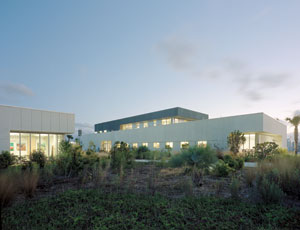Feedback Loop
With a frequent gap between predicted and actual performance, post-occupancy evaluations begin to catch on.
Architectural Record
Learning Objectives:
- Define the term post-occupancy evaluation (POE).
- Identify quantitative and qualitative factors that POEs can be used to study.
- Discuss legal and practical barriers that prevent some architecture firms from performing POEs.
- Discuss recent legislative and regulatory developments that are helping spur more interest in POEs.
Credits:
This test is no longer available for credit
Post-occupancy evaluation, or POE, is a diverse practice that can feed back data into the design process on everything from energy and water consumption to workplace satisfaction and even occupants' sleep cycles. According to sustainability-minded architects, POE is a prerequisite to closing the all-too-frequent gap between predicted and actual performance.
Continues at architecturalrecord.com »

Photo © Timothy Hursley
Originally published in Architectural Record.
Originally published in August 2015






